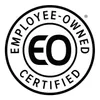Pullover
One size fits most
Brands |
N/A DuPont™ Tychem® 400 |
Design |
N/A Hood |
Seam Construction |
N/A Serged |
Color |
N/A White |
Sizes |
N/A 00 |
Package Type |
N/A Case |
Units Per Package |
N/A 100 |
Typical Thickness (American Society for Testing and Materials (ASTM) D1777 Test Method) |
N/A 5.9 mil |
Typical Basis Weight (American Society for Testing and Materials (ASTM) D3776) |
N/A 1.2 oz/yd² |
Typical Burst Strength - Mullen (American Society for Testing and Materials (ASTM) D774) |
N/A 50 psi |
Typical Seam Strength (American Society for Testing and Materials (ASTM) D1683) |
N/A >19 lbf |
Typical Breaking Strength - Grab (MD) (American Society for Testing and Materials (ASTM) D5034) |
N/A 18 lbf/in |
Typical Breaking Strength - Grab (CD) (American Society for Testing and Materials (ASTM) D5034) |
N/A 22 lbf/in |
Typical Hydrostatic Head (AATCC 127) |
N/A 45 in H2O |
Typical Surface Resistivity (25 ºC / 55% RH) (American Society for Testing and Materials (ASTM) D257) |
N/A < 6.3 x 109 Ω/sq |
Typical Wearing Apparel Flammability (16 CFR 1610) |
N/A Class 1 |
|
N/A Seams and closures have less barrier than fabric. Serged and/or bound seams are degraded by some hazardous liquid chemicals, such as strong acids, and should not be worn when these chemicals are present. Tyvek® 400 with Friction Coating (FC) has been special |
|
N/A
Tyvek® should not be used around heat, flames, sparks or in potentially flammable or explosive environments. Garments made of Tyvek® fabrics should have slip-resistant or anti-slip materials on the outer surface of boots, shoe covers, or other garment surfaces in conditions where slipping could occur. |


